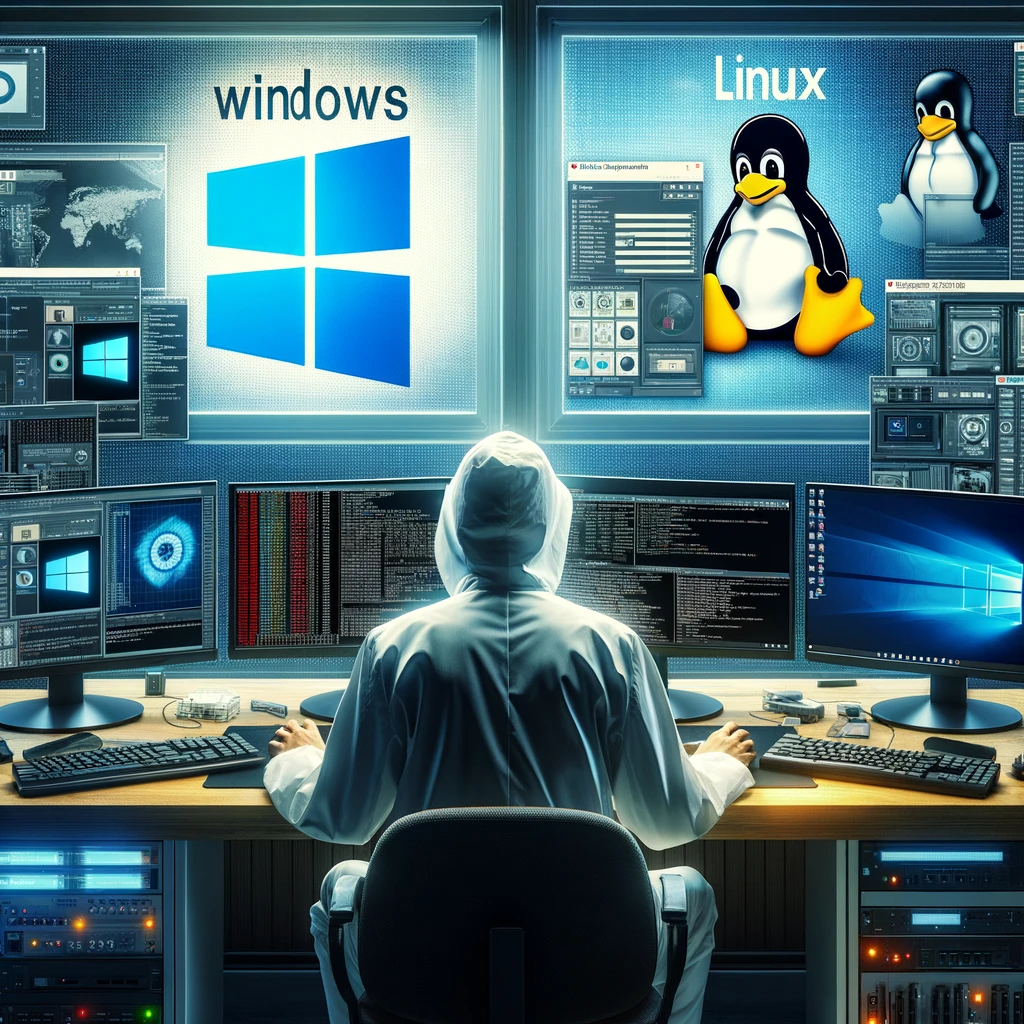Windows and Linux, two of the most prevalent operating systems in the world, are fundamentally different yet both are crucial in the realm of digital forensics. Understanding the forensic capabilities and tools available for each system is essential for any digital forensic investigator.

Similarities in Windows and Linux Forensics
Despite their differences, Windows and Linux share several commonalities in a forensic context:
- Structured File Systems: Both have structured file systems with permissions that can be set for individual files or folders.
- System Logs: Each OS logs major system events, aiding forensic investigators in tracking activities and diagnosing problems.
- Graphical User Interface (GUI): Both provide a GUI for management, although Linux can operate without a GUI, which is not the case for Windows.
Key Differences Affecting Forensics
Understanding the differences between these two operating systems is vital for forensic analysis:
- Configuration and Control: Linux programs, unlike Windows, do not rely on a central registry and are controlled by individual configuration files.
- Source Accessibility: Windows is a closed-source system developed by Microsoft, while Linux is open-source, offering more flexibility for forensic examination.
- Command-Line Interface (CLI): Linux features a more robust command-line interface compared to Windows, beneficial for forensic tasks.
- Security: Linux is generally considered more secure than Windows when properly configured and updated.
Forensic Tools for Windows and Linux
Digital forensic investigations rely heavily on specialized tools designed to extract, preserve, and analyze data. Here’s a look at some of the tools for Windows and Linux systems:
For Linux
- SIFT (SANS Investigative Forensic Toolkit)
- CAINE (Computer Aided INvestigative Environment)
- KALI (formerly Backtrack)
- DEFT Linux (Digital Evidence & Forensics Toolkit)
- Volatility
- Linux “dd” utility
- Sleuth Kit (Autopsy)
For Windows
- EnCase
- ProDiscover Forensic
- Forensic Toolkit (FTK)
These tools, while often designed for specific operating systems, can usually examine file systems from a variety of sources, including those not native to the operating system they run on.
Conclusion
In digital forensics, the choice between Windows and Linux tools depends on the specifics of the case and the investigator’s familiarity with the operating system and tools. Both Windows and Linux have robust forensic capabilities, each with unique strengths that can be leveraged during investigations.
For more in-depth analysis and technical details on forensic tools, visit SANS Investigative Forensic Toolkit and Infosec Institute’s guide.






